Confessions of a Monster Boomer, Part Deux
Monster Boomer" is term that I first started seeing in the early 90s, when David J. Skal's book The Monster Show: A Cultural History of Horror, was published.
It's an exceptional work, and must reading for anyone who's ever wondered why about the place monsters in American culture, and how they went from scary to cuddly, but I'm being longwinded enough without attempting to review it, so here's a link.
http://www.monstershow.net/work2.htm I'll just say that I read it with a shock of recognition. Suddenly, I knew who and what I was. Not just a baby boomer, not a post-hippy or pre-punk, but a Monster Boomer!
The Monster Boom is generally agreed to have begun in 1957, when the first "Shock Theater" package of old horror and science fiction movies was syndicated on American television. The next year saw the debut of Famous Monsters of Filmland.
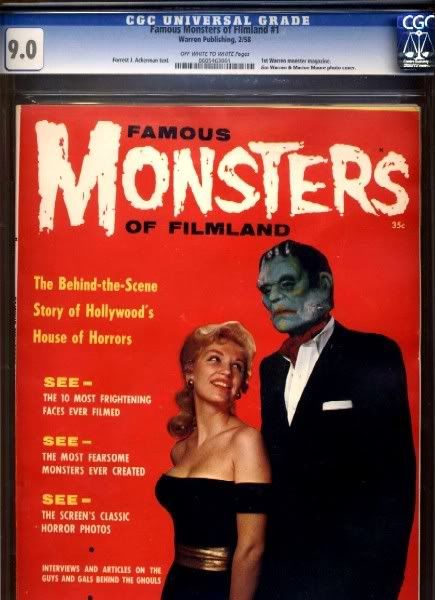
In 1961 the first Aurora model kit of Frankenstein's monster hit American toy and hobby stores. It may not have had the impact of the hula hoop or the frisbee, but was a niche market sensation.
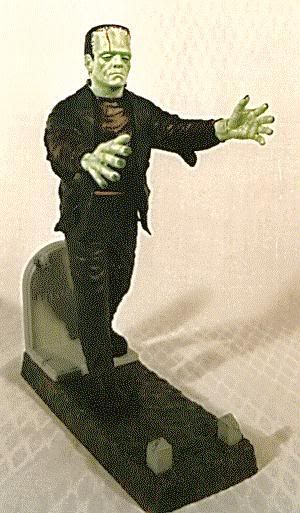
I joined the great American horror show around 1964, when I was six years old . For me, it was the outgrowth of my love of reptiles and dinosaurs. I'd noticed that the Aurora Model Kits included something called The Creature from the Black Lagoon, and while I later figured out that he was meant to be some kind of fish-man, I originally thought of him as reptilian.
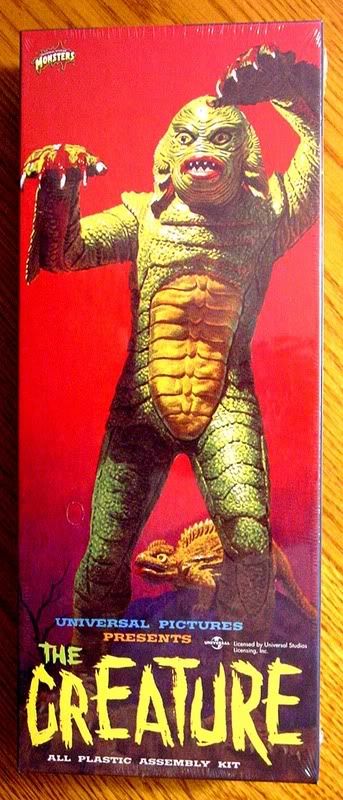
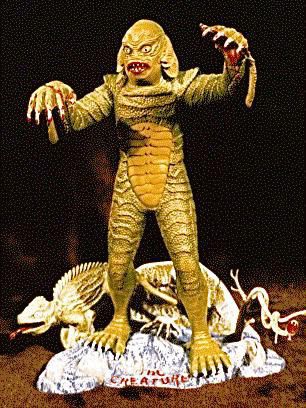
And there was this dinosaur called Godzilla, who was clearly meant to be some kind of fire-breathing combination of a t-rex and a stegosaurus.
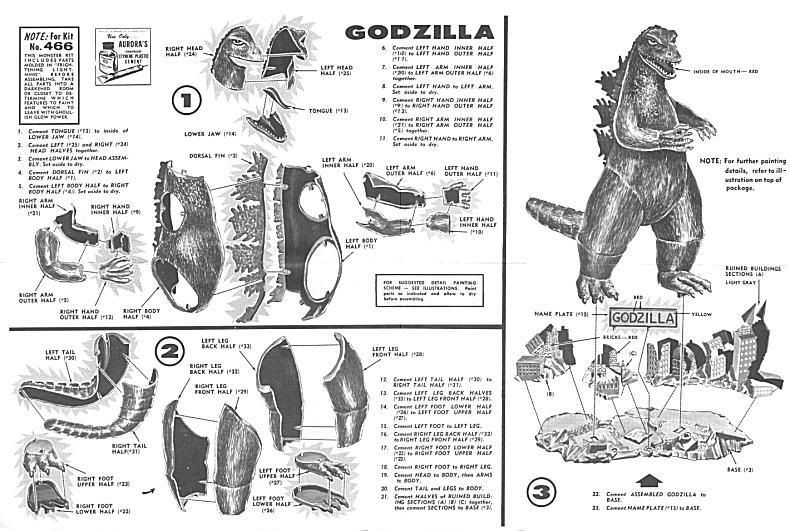
Let me stress this point. I'd never seen either the Godzilla or The Creature on TV, or on the big screen. I first knew them exclusively as model kits in the toy section of Roses Department Store at Eutaw Shopping Center in Fayetteville, NC. Of course, I had to have them. But once I'd assembled and painted them (with my father's patient help), I started to get interested in their more humanoid friends. Who was this character called Frankenstein? (I hadn't yet learned that was the name of the doctor who created him, not the monster.) Was he some kind of robot, or what? What was a wolf-man? Who was this guy in a cape whose name I kept mispronouncing as Dragula? (So did all the other kids, just as we later called the big green comic book character "The Huck" rather than The Hulk!)
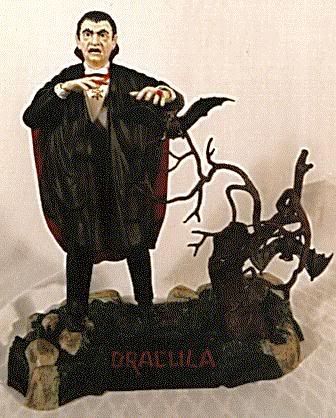
I learned about them from the information sheets in the model kits, and was fascinated. And then I traded Joey Miller a jar full of leeches I'd gathered in the creek for a tattered back issue of Famous Monsters of Filmland, mainly because it had what appeared to be an even cooler giant dinosaur than Godzilla on the cover. It was the early 1960s British Godzilla imitation Gorgo, and for some reason I really liked the little webbed flaps on his head. This famous painting, by the great Basil Gogos, made Gorgo look much more fearsome and lifelike than he actually does in the film of the same name, something which was true of most of the covers that Gogos did for FM:
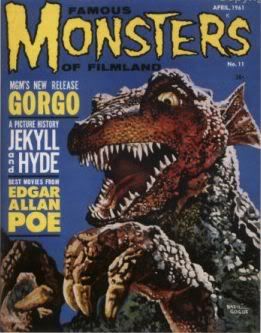
And that was my downfall, or perhaps, my salvation. Famous Monsters was going to become my Bible (or maybe my Necronomicon). It was in that magazine that I learned about Boris Karloff and Bela Lugosi, Lon Chaney Sr. and Jr., Peter Cushing and Christopher Lee. I often knew the stories of famous monster movies years before I ever saw them.
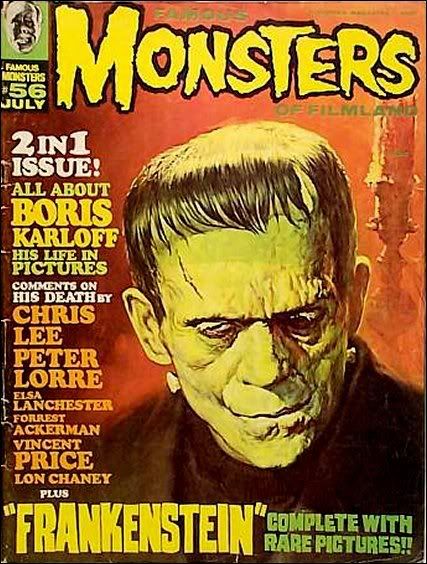
And so I began collecting. Tons of stuff, none of which I have any more, sadly. The toy section at Roses and at Woolworths was full of monster related items. Monster dolls. Monster board games. Monster drinking glasses. Monster trading cards. I had my parents buy it all for me. My room became as dedicated to monsters as it had been to dinosaurs and reptiles.
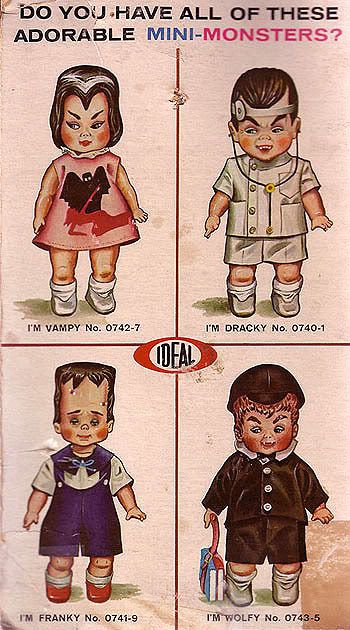
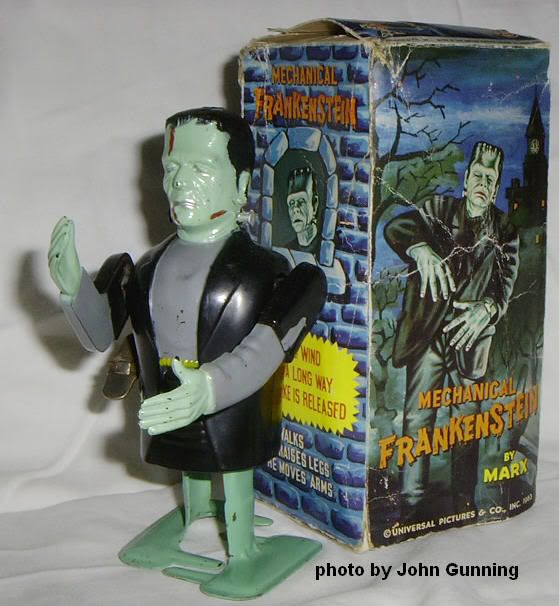
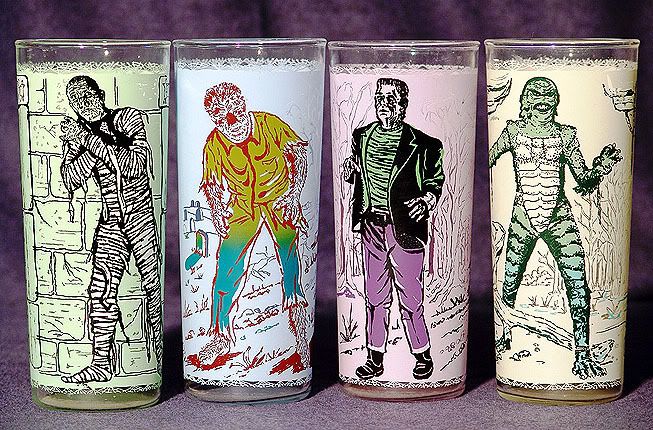
I used my allowance to buy the same model kits over and over again, because they'd break, or I'd burn them with gasoline, and then I'd want to build them again. I got a bit tired of the old favorites, and branched out to new found ones like The Bride of Frankenstein. I loved the tiny bits of lab equipment I had to assemble with her model, and was excited by the feminine curves of her body under its plastic bandages.
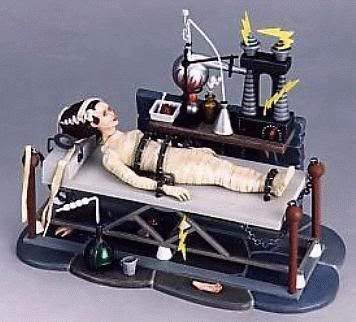
I even owned the very rare Chamber of Horrors guillotine, with the head that really came off and fell into the basket when the blade came down.
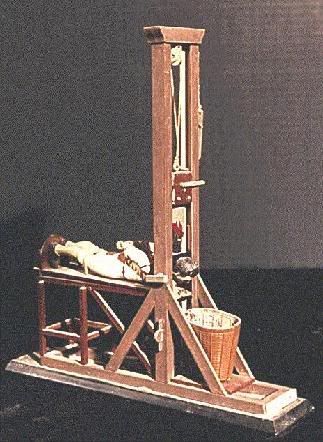
Although I didn't know it, I was part of a thriving "monster kid" (as it's sometimes called now) subculture, in which boys (never, as far I knew, any girls) became obsessed with the same movie icons that had terrified their parents. Before long, I wasn't just collecting the models and toys; I was watching the movies, every chance I got. I'd stay up late on Friday night to watch Shock Theater (hosted by Dr. Paul Bearer) at midnight on Channel 8, then somehow manage to get up early on Saturday for Channel 6's Sunrise Theater, which also showcased classic (and some not so classic) 1930s and 1940s film starring Boris Karloff, Bela Lugosi, and Lon Chaney Jr.. Weekdays, I'd rush home from school in order to see Dialing for Dollars, a syndicated film package (in which the movies were interrupted by the host calling up viewers to offer them cash prizes, not that I cared about this) that featured more recent stuff; Godzilla and Gorgo and Rodan, American giant insects and alien invaders from the 1950s, and early 1960s Eurohorror, some of it surprisingly bloody.
I lived, breathed, ate, slept and dreamed monsters. I spent a good portion of each and every day drawing them. My school notebooks and textbooks soon became covered with doodles like this:
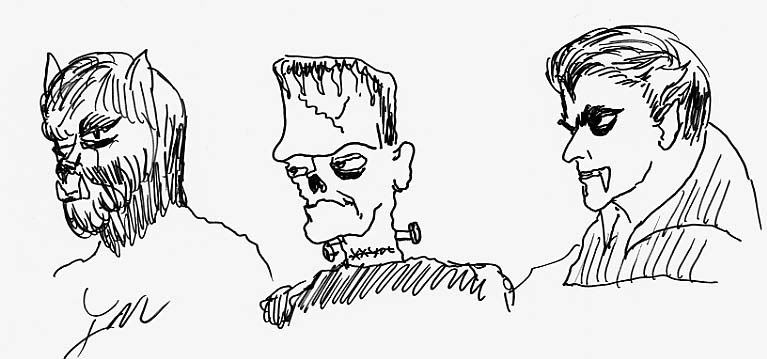
My dad eventually got tired of me always asking him if there was a new issue of Famous Monsters at the local newsstand. One birthday, he gave me a subscription to Boy's Life, Mad Magazine and Famous Monsters of Filmland. I read them all avidly, but it was Famous Monsters that had a special place in my heart. Until a few years later, when I discovered Castle of Frankenstein.
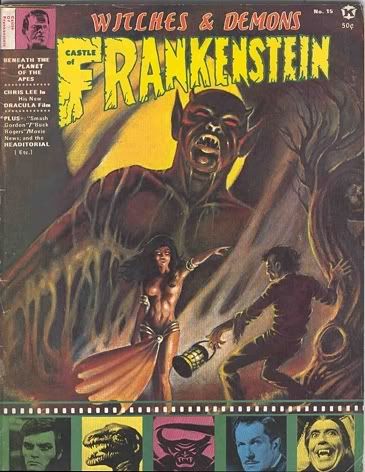
This magazine was from a competing publisher. Future director Joe Dante (THE HOWLING, GREMLINS) was one of the regular writers. It had tinier print than Famous Monsters, and a LOT more of it – it was just jam-packed with articles and features and columns. It dared to be critical and esoteric and to suggest that some of the movies it covered actually sucked. It featured nudity, both in comic book style drawings of sorceresses and femme fatales, and in still photographs from spicy European films. And in a move that alienated some of its readership, it moved from monsters into political commentary, protesting the Vietnam War and attacking Johnson and Nixon. It was my first exposure to politics. I felt subversive reading it, growing up in flag-waving army town where hippies generally didn't dare set foot (you usually had to go to Chapel Hill and Greensboro to see them).
Few things made me as happy as the day the new issue of CoF arrived in the mail. There's almost nothing I can compare it to now, almost nothing that's redolent of the same kind of joy and excitement. There's something pure in that kind of expectation and happiness, something that you can never recapture. I suppose if I'd been 10 years old, rather than 22, when I stood in line for the first showing of The Empire Strikes Back in Chapel Hill, I might have felt something similar. For a few years in the mid-90s, when I first discovered the films of Jet Li, Michelle Yeoh, Jackie Chan and Chow Yun-Fat, and would make road trips with equally obsessed friends to see them as the now sadly defunct Asian-American film festival in Durham, NC, I felt something similar. But mostly, no, it's gone, like one of those highs one can never have in quite the same way again, like the first time one falls in love, or is allowed to put one's hand under a bra, or does heroin.
















